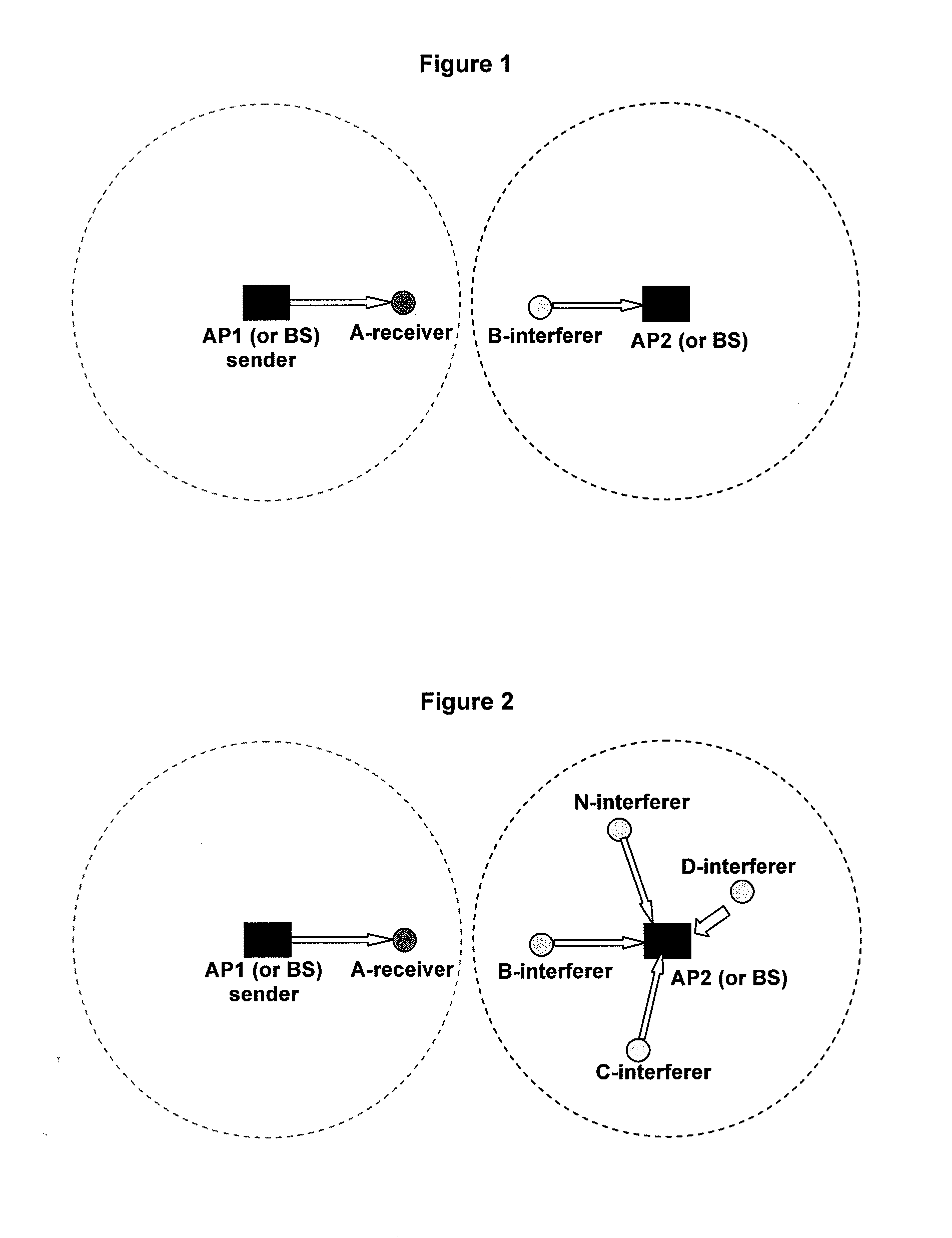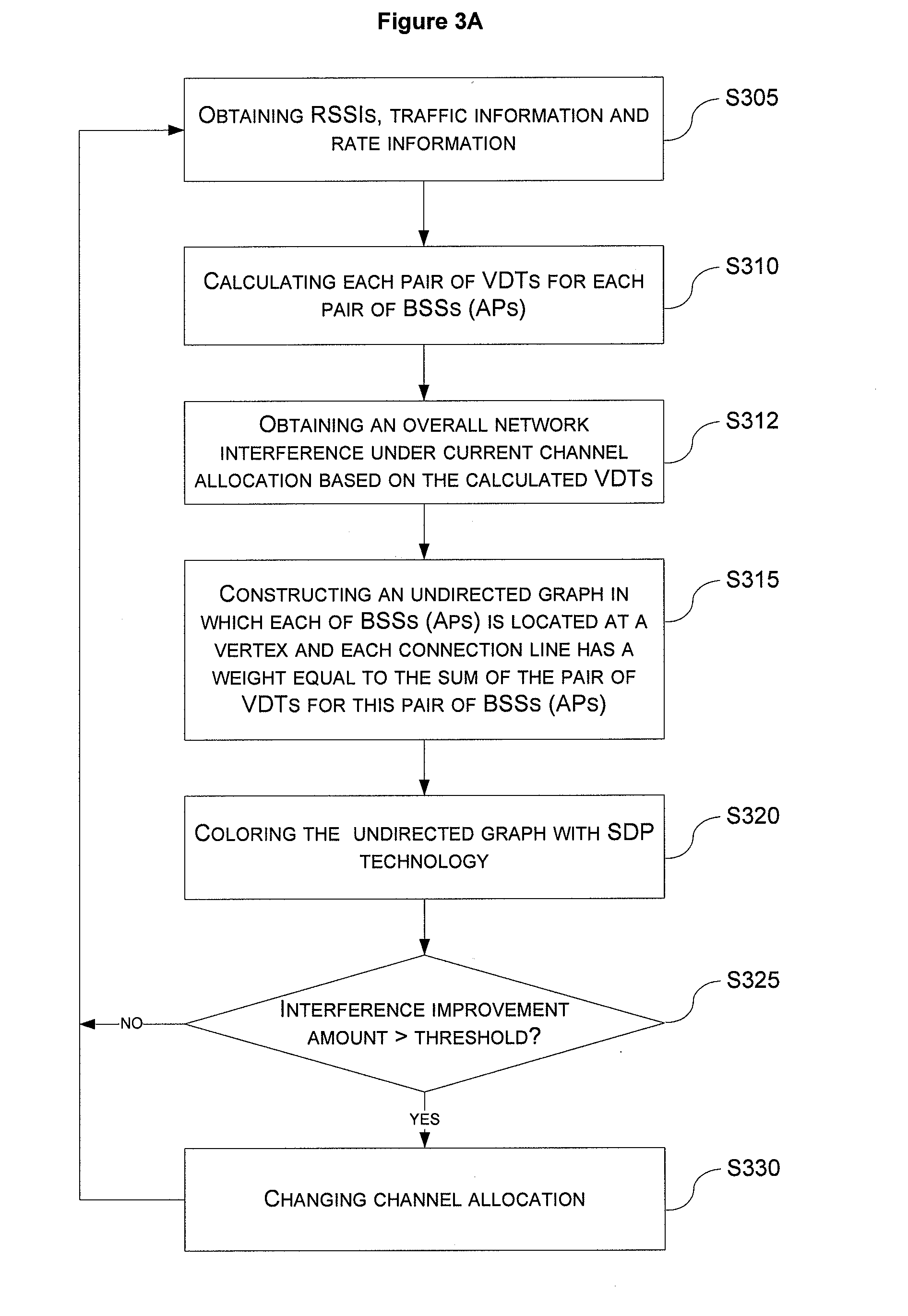Network interference evaluating method, dynamic channel assignment method and apparatus used in wireless networks
a dynamic channel assignment and wireless network technology, applied in the field of wireless network, can solve the problems of poor address of direct impact on interference performance, loss of interference prediction accuracy in some scenarios, etc., and achieve the effect of simple software upgrades
- Summary
- Abstract
- Description
- Claims
- Application Information
AI Technical Summary
Benefits of technology
Problems solved by technology
Method used
Image
Examples
Embodiment Construction
[0071]Hereunder, the present invention will be described in accordance with the drawings. In the following description, some particular embodiments are used for the purpose of description only, which shall not be understood as any limitation to the present invention but the examples thereof. While it may blur the understanding of the present invention, the conventional structure or construction will be omitted.
[0072]A simple case for the invention applied is shown in FIG. 1. In the cell of AP1, AP1 is transmitting traffic to a node A. In the cell of AP2, a node B is simultaneously transmitting traffic to AP2. When the two cells use the same channel, the node B is an interferer to the receiver—the node A.
[0073]To evaluate the interference degree from the node B to the node A, the parameters the node A needs to collect are listed in Table 2.
TABLE 2parameters to be collected by the receiverParameterExplanationRatexWithout interfernce, normal transsmion rate of node xx ∈ Set of Access P...
PUM
 Login to View More
Login to View More Abstract
Description
Claims
Application Information
 Login to View More
Login to View More - R&D
- Intellectual Property
- Life Sciences
- Materials
- Tech Scout
- Unparalleled Data Quality
- Higher Quality Content
- 60% Fewer Hallucinations
Browse by: Latest US Patents, China's latest patents, Technical Efficacy Thesaurus, Application Domain, Technology Topic, Popular Technical Reports.
© 2025 PatSnap. All rights reserved.Legal|Privacy policy|Modern Slavery Act Transparency Statement|Sitemap|About US| Contact US: help@patsnap.com



